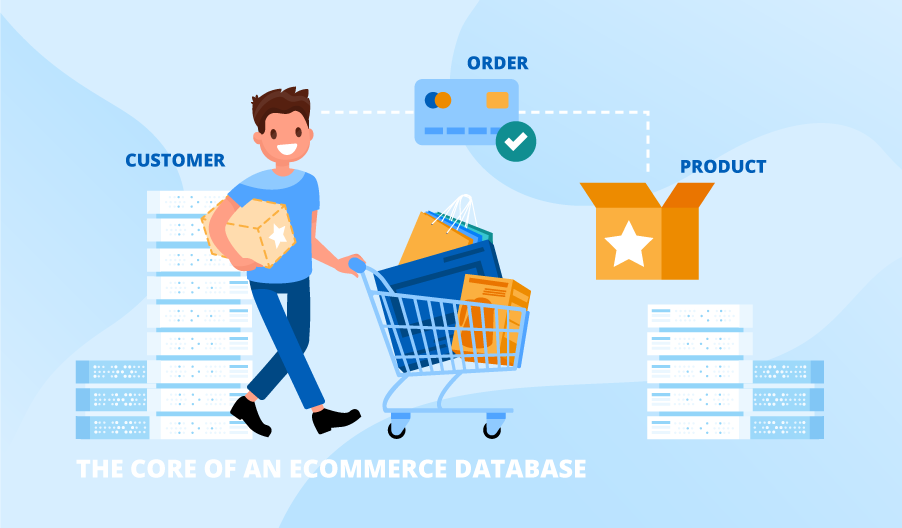How to Design an Ecommerce Database for Smooth Data Management
Editor’s note: In this article, Tanya tells about the core of an ecommerce database and its implementation. Read on and if you need to design and implement an optimal ecommerce database, check out ScienceSoft’s ecommerce services.
Is it possible to run an ecommerce store without a database behind it? Yes, but it would be feasible only for small businesses selling a limited amount of products to a small customer base. If your store doesn’t fall under this description, you’ll need a database to store and process data about your products, customers, orders, etc.
An ecommerce database allows you to organize data in a coherent structure to keep track of your inventories, update your product catalog, and manage transactions. The amount of effort required for your database management directly depends on how well it was designed.

Create a layout to organize your data effectively
Elaborating an ecommerce database architecture is the first step in its development. With a thoroughly designed database, you’ll make your ecommerce database a long-term solution that won’t require many updates and changes when your business is up and running.
Database design is mainly determined by a database schema. It is expressed in a diagram or a set of rules, aka integrity constraints written in a database language like SQL, that define how the data is arranged, stored, and processed.
What forms the center of an ecommerce database?
The three data blocks that comprise the core of an ecommerce database are a customer, an order, and a product. However, it’s a good practice to plan a database keeping in mind its possible expansion (tables for suppliers, shipments, transactions, and other data).
The Customer
The basic customer information includes a name, an email address, a home address broken down into lines, a login, a password, as well as additional data like age, gender, purchasing history, etc.
The Order
Order tables hold data about the purchases of each individual client. Usually, this data is organized into two tables. The first table contains all order-related information like the items ordered, date of order, the total amount paid, as well as Customer ID – a foreign key to the customer table.
The second table holds data on each product from the order, including product ID, its price, parameters, and quantity.
The Product
Tables with product data include SKUs, product names, prices, categories, weight, and product-specific information like color, size, and, material, etc. If you’re selling many products from categories different in their attributes, having a single table listing all products with null values for some of the product parameters may not be appropriate.
In some cases, an entity–attribute–value, or an EAV, model may become an optimal approach. In the simplest case, it includes two tables. The first one is a product entity table with product IDs, attribute IDs, and attribute values. The attribute ID is a foreign key into the second table with all attributes and their definitions. This configuration gives an opportunity not to store every possible attribute (sometimes absent for a specific product type) in the product entity table.
Develop the core into a tailored solution
To define an optimal ecommerce database design, you need to carefully assess your ecommerce store, considering its size, features, look, integrations, and future evolution. Dedicated database development consultants at ScienceSoft are ready to help you define the tech stack required to support your business throughout its life cycle. If you would like to learn more about the database design options that would be perfect for your store, feel free to ask us.

